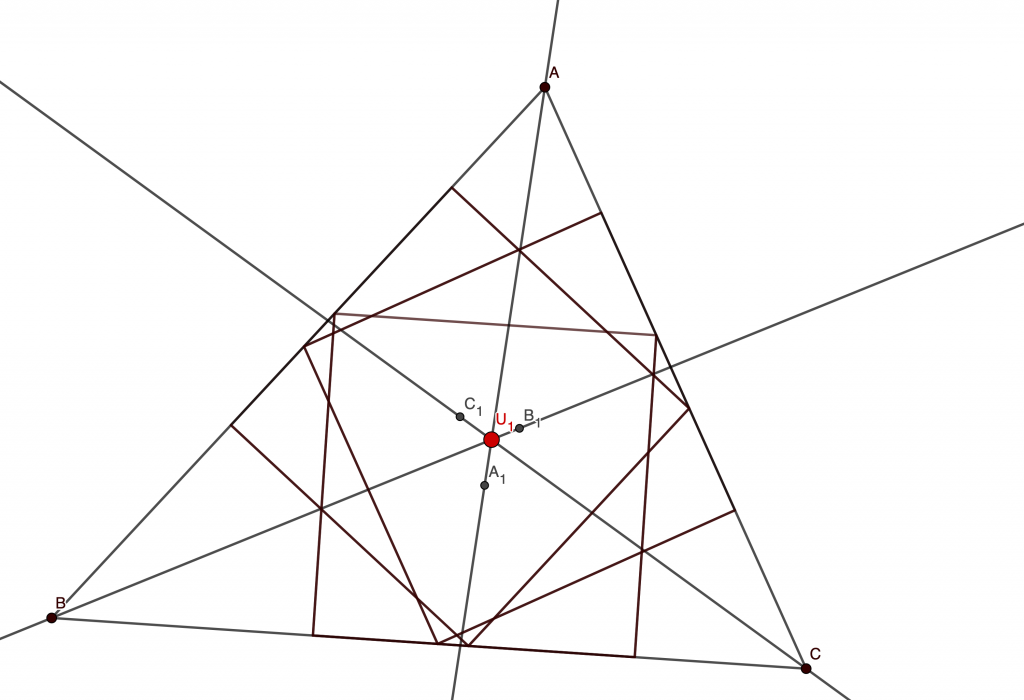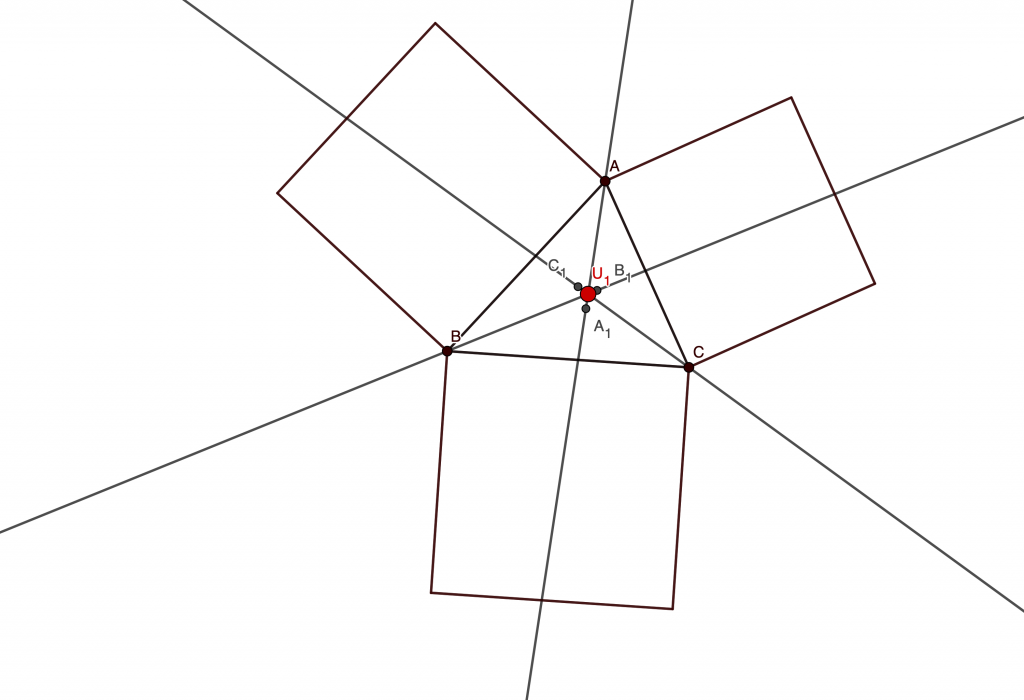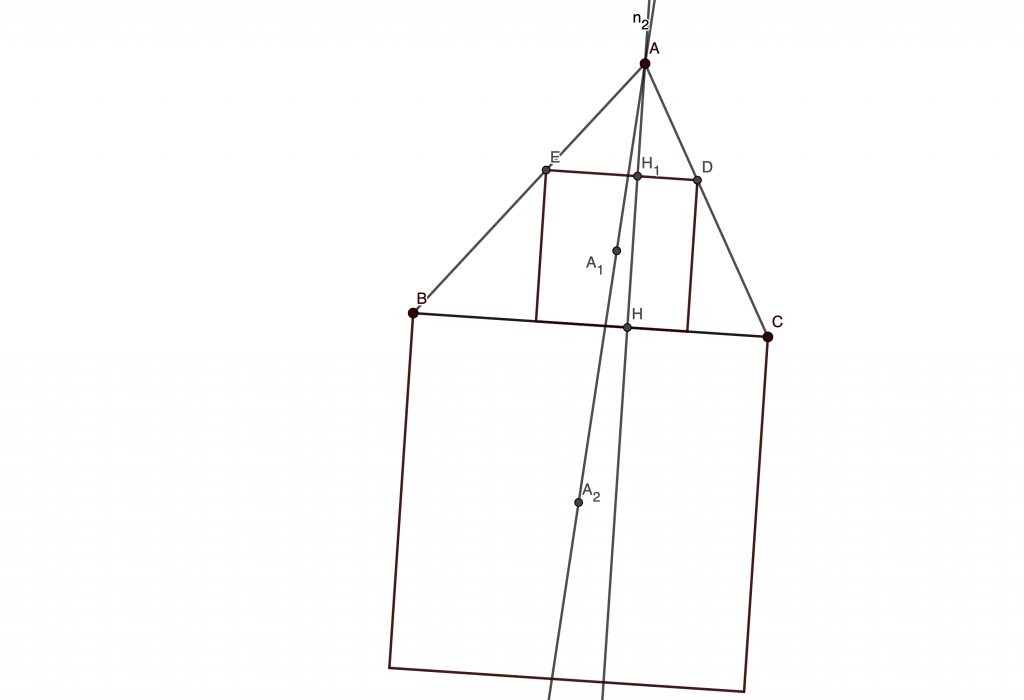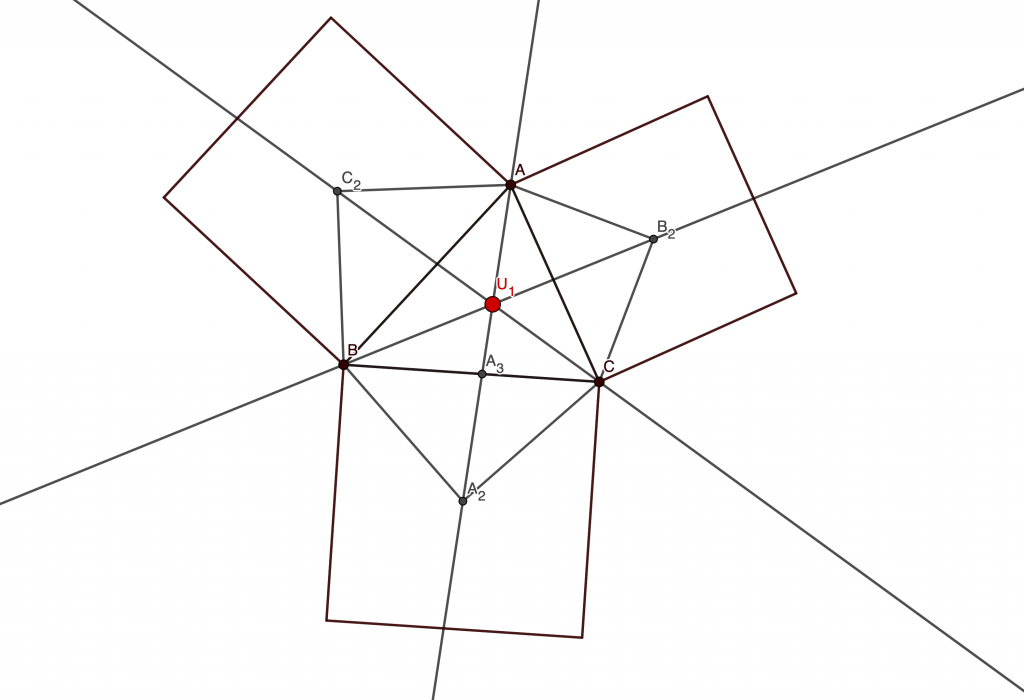Let be the center of the square inscribed in acute triangle ABC with two vertices of the square on side BC. Thus one of the two remaining vertices of the square is on side AB and the other is on side BC. Points
and
are defined similarly. Prove that lines
and
are concurrent.

The Idea
Seen from this perspective, the problem may seem very hard, so the idea is to exploit a homothety bringing an inscribed square, say the one with two verticles on , to a square whose side coincides with
.

How do we show we can actually do it?
So there is a homothety with center A bringing to
and
to
. So, because homothety preserves similarity and ratios, if we take the same homothety on the whole square, it will be sent to no other than the square constructed on
with side
. In particular, let
be the center of the new square. Define
and
similarly.

Now we see that considering line is equivalent to considering line
and so on. So now we must show that lines
concur. Now let’s use Ceva’s Theorem. Let
be the intersection of line
with
. Define
similarly. Now, by Ceva’s theorem, we have to show that
Looks very good for us, now the proof is pretty notorious and I will show it in the next part. It’s very educative to see how a seemingly horrifying problem can be turned into something easier with a wise use of homotheties.

Can you figure it out?
This is the end
Note that in standard notation, and, by replacing the areas with the standard area formula
we obtain
since triangle is clearly hysosceles on base
.
By analogous reasonings on the other sides of the triangle we obtain :